
Unless you've been hiding under a rock the last twelve months, you'll know that 2018 has been coined the Year of the Woman. And this has brought a belated focus on how women are portrayed on our screens. While a positive shift does seem to be occurring, much more can be done to improve the representation of female characters. And as all stories begin with the writer, it's our responsibility to initiate further change.
But I know from many of you that there is considerable confusion and doubt surrounding this topic. Many wish to improve their female characters, but are unclear as to how they should.
So I thought it was the right time in my role as a helper of writers to offer some assistance. And what better way to obtain clarity on this subject than to ask those professionals who portray them on our screens. To this end, I have asked 50 professional actresses and women working in the industry to kindly give me their thoughts on female characterisation.
INTRODUCING THE FAB 50
These fifty female contributors are award winners, graduates of renowned institutes of the dramatic arts and boast an impressive array of film credits:
BRAVEHEART • DJANGO UNCHAINED • KILL BILL 2 • COYOTE UGLY • ENEMY OF THE STATE • RENT • US MARSHALS • DAYLIGHT • GLORIA • SHE'S THE ONE • THE MILAGRO BEANFIELD WAR • SAW VI • DOUBLE IMPACT • IN THE MOUTH OF MADNESS • MINDHORN • NOW YOU SEE ME • PLAYING FOR KEEPS • IN & OUT • THE HAMILTONS
... to name just a few, together with roles in such TV shows as:
MARVEL'S JESSICA JONES • TRUE DETECTIVE • ARROW • LUCIFER • GAME OF THRONES • LAW & ORDER • EASTENDERS • EMMERDALE • SILENT WITNESS • BLACK MIRROR • TREME • HOUSE OF CARDS • HIDDEN • ER • BLOODLINE • QUEEN SUGAR • CSI: NY • NYPD BLUE • ER • HUMANS • NIP/TUCK • CAGNEY & LACEY • MIAMI VICE • RED DWARF
They have worked alongside some of the biggest names the silver and small screen has to offer. From Angelina Jolie to Arnold Schwarzenegger, Halle Berry to Hugh Laurie, Melanie Griffith to Matthew McConaughey, Jessica Biel to Jean-Claude Van Damme. And have been directed by such legends as Robert Redford, John Carpenter, John Cassavetes and Quentin Tarantino.
So their opinions count. Their views and judgements carry considerable weight. In short, they should be listened to. Follow their advice, heed their warnings, their frustrations and fears. Learn from them. And the hope is that over the course of these articles you'll adopt some new ways of writing the women in your stories so that we start...
CREATING BETTER FEMALE CHARACTERS
Now my initial idea was to put all my findings in one single article. However, after reading the responses it soon became clear this would be a disservice. The advice was of such high quality that I wanted to feature more of their insights. To this end, I have chosen to write a series of articles focusing on specific aspects of female characterisation.
So to apply that old Hollywood phrase, let's cut to the chase and begin this series of articles...
It's important to write characters that actors and actresses would fight tooth and nail for, sell their grandparents or a vital organ to play. Also, attaching talent to a script can certainly improve your chances of getting a project produced, particularly if said talent is a name. So my opening question to the Fab 50 was:
What do you look for in a role? What excites you?
I received a variety of answers, although it was clear there were a handful of common characteristics. Chief among them however is a role that has...
STORY SIGNIFICANCE
American actress, screenwriter, director and co-founder of The Hawk Swoops Productions Pamela Perrine looks for ❝someone significant to the story, not just filler.❞ Adaku Ononogbo echoed that sentiment, stating, ❝female characters that help drive the story along and not used as fillers or [to meet] a quota❞ are what interests her.
But that's not to say that they demand lead roles. Sarah Rose insists, "it doesn't matter how large of a role it is, as long as the character has a purpose." Model and rising star Atlanta Johnson also believes it's less about quantity, more about quality: ❝Much better to appear for a few moments in a piece adding something valuable or progressive to the story.❞
This reiterates an important facet of screenwriting and storytelling, that when you are writing your characters, make sure they have clear story value. If a character can be lifted out without affecting the tale, then this is a sign that they are not bringing enough to the table. Sadly, many female roles tend to be the first to lack that vital story importance.
Atlanta remarks on this sad state of affairs: ❝Unfortunately I have seen scripts going around ... that have literally written girls who come in just to be provocative and then they're shot in the next scene but it had zero impact on the storyline.❞
So the first lesson here is ensure your female characters have presence, purpose and enhance the story going forward. Or as Jane Badler, best known for her portrayal of villainess Diana in the TV cult classic V, succinctly puts it, make sure they have ❝a reason to be in the script.❞
COMPLEX AND MULTI-FACETED
This was another critical requirement touched on by the majority of the Fab 50. Mhairi Calvey, who made her movie debut as Young Murron in Braveheart and has since shared the screen with Sean Connery, Brian Cox and Sienna Guillory, states ❝I look for characters with dimension.❞ And Heidi Cox specifies, ❝I definitely want something that has layers.❞ Layers, dimensions, facets... but what does this mean, exactly? Francesca L. White digs deeper: ❝I particularly look for multi-faceted characters who ‘feel’ real more than just a function to tell the story [or] show something in another character. Someone with objectives, goals and a life beyond the lines. Shades of grey type characters are always intriguing to read, see and play.❞
So we're talking roles that are not just one-note characters, but that have depth, light and shade, that have been developed beyond the basic stereotype. Elizabeth Bower, star of Trollied and Silent Witness, echoes a widely-held warning to writers when it comes to those one-dimensional roles: ❝I lose interest in the writing if female characters are described by appearance, especially in degrees of perceived attractiveness because it's clear the person creating them has started at a superficial level of aesthetic judgement. Why is she described by her face and weight when the male characters are described by their job and demeanour? ❞
As a script consultant of many years, I can confirm this occurs all too often. It's a lazy, predictable approach to women. Writers need to be looking beyond the physical, the external, and conveying more act-able description. ❝She has to be a fully-fleshed out human being,❞ says Kathi Cairey, ❝with hopes and dreams, stellar traits and flaws...definitely not some cardboard cut-out, one dimensional idea of what a woman is supposed to be or someone's fantasy.❞
And this is key. Flaws help make a character more complex. As Daniele Passantino says, ❝I look for complexity in a role... not one dimensional - a 'good' person isn't always perfect, a villain has redeeming qualities, the lines are blurred.❞ Mari Stracke agrees: ❝Personally I love it when female characters are anything but perfect.❞
As writers, one way to guard against stereotype is to spend time truly defining your female characters. Many don't put in the time and effort. Write a bio, explore their characters, their attitudes, develop a backstory. As Mia Mills attests, ❝you'd be surprised how many characters I've read for [or] played that just don’t have that backstory to carry it through.❞
A CHARACTER ARC - A JOURNEY
Another popular trait sought after by the Fab 50. And one that should be extremely familiar to screenwriters: the character arc. It was clear that many of the actresses regard this as crucial. Mackenzie Firgens wants ❝a good journey and character arch. What excites me is humans overcoming obstacles to become a better version of themselves.❞ Kate Terence feels the same: ❝She needs to be a character with a distinct noticeable arc, it helps if she is both vulnerable but finds her strength through the course of the story.❞ And Natalie Martins sees eye to eye with her fellow 'players' revealing, ❝if there's a real sense of history in the character and an interesting arc in their journey throughout the script then I'm usually pretty excited.❞
But it is important to point out that this journey doesn't always have to be particularly literal or physical. As Vanessa Bailey explains, ❝I like to see a journey in a female character. Even if the journey is just back to the beginning, back to where she started from. She doesn’t have to end up somewhere different, but she has to wrestle with the direction she needs to go in, even if that’s staying put.❞
A CHALLENGE
It was clear from the answers I received that, in the main, actresses like to be challenged. They want to play roles that test their talent. As Kaili Turner explains, ❝If the part scares me in anyway, I know it’s perfect for me. I don’t want to be comfortable. I want to be stretched as an actor."
Tracey Birdsall feels the same way: ❝I’m always looking for something more difficult, something with huge arcs, and to grow beyond who I am by experiencing new things by living these roles. I want to be people I don’t relate with, to experience vast perspective changes.❞
Even those actresses who want a role that fits their skillset still desire that challenge. ❝I look for roles that are in my wheelhouse...❞ is how Jennifer Field puts it. ❝... but also stretch me just a bit. I want to always be growing, expanding my possibilities as an actress.❞
Jennifer Durrans concurs: ❝I like to see a little bit of myself in a role initially, I find that connects me immediately to a script and makes me warm to it. However, I think ultimately you have to look at what will challenge you the most. I enjoy playing opposites very much, it gives me a thrill and allows me to tap into a part of me that wouldn’t usually ever come out to play.❞ To this end, it would serve you well as writers to create roles that will push the person playing them. Rather than tired old stereotypes with little to no depth or definition, give their acting muscles a proper workout. Furthermore a challenging role is fated to be a fascinating one - a key element shared by all great major roles.
AUTHENTICITY - RELATABILITY - TRUTH
The final common attribute shared by the Fab 50 was a role that was relatable; someone who feels authentic. Or as actor/producer Tori Butler Hart puts it: ❝I would say a character has to be believable, first and foremost. It needs to have truth in whatever journey or arch the character is taking. Something that is relatable on an emotional or psychological level.❞
Indeed, 'truth' along with 'realism' were clear watchwords in the answers to this question as evidenced by Emmerson Garfield: ❝The role has to carry a sense of realism, even if they were surrounded by a fantasy world.❞ and Natalie Martins looks for a character that has, ❝a sense of truth, depth and has characteristics I connect with.❞ ❝Authenticity,❞ insists Vanessa Bailey. ❝She has to feel real. I have to be able to read her as a flesh-and-blood human being.❞
And this makes a lot of sense. For if an actor cannot feel some kind of a connection, cannot believe in the role, then it makes it so difficult for them to become that character. And if the actress cannot relate, then how is an audience going to?
This is why I always encourage writers to ensure their characters are relatable. Particularly with regards to leads, audiences need someone they can invest in and root for. That's not to say they need to be likeable, but as these professional actresses have posited, you would be advised to make them believable.
SUMMARY
While these five fundamental elements were by no means exhaustive, they should provide a solid benchmark, a general gauge for what actresses are looking for today.
If you need another example of what those key components are, here's Lauren Elyse Buckley with her answer, which perfectly sums up what has been discussed in this first article:

❝What excites me as an actor is finding roles that are multi-dimensional and show a real range of emotions and experiences. Women who are complex and have strong backstories [that] build a solid foundation for the character in the storyline. A one-note love interest isn't going to be an exciting challenge for an actor or leave a lasting impact on an audience. What sticks with me as an actor, a writer, or an audience member is a character who experiences real hardship and moves through the emotions honestly and vulnerably.❞
So when developing your female characters, strive to keep these points of view in the forefront of your mind and in doing so I am confident you'll start to see improvement. And from a personal perspective, I'd love to read more scripts that have female roles hitting these principles rather than the same old stereotypes. Changes need to be made. And it all begins with you, the writer.
Next time: In part II of my CREATING BETTER FEMALE CHARACTERS series, I'll be focusing on the common mistakes and clichés used when writing female characters, once again giving the stage to the Fab 50.

















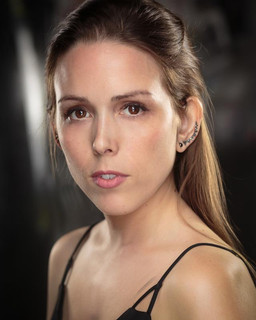

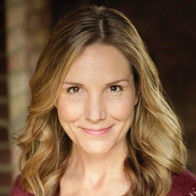

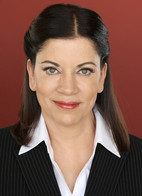



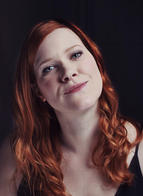



















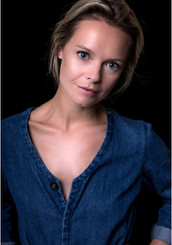


Comments